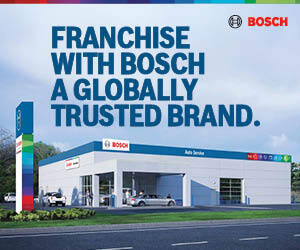Karen Garrett Discusses How Woodhouse Spa Balances Strategies for Franchise Growth and Consumer Marketing

Like many franchises, Woodhouse Spa carefully tailors its messaging for both franchise development and marketing based on the audience for each. Whether it is focused on attracting potential franchisees or local customers, franchises must create a unique message for each group while also keeping it consistent with the overall brand message.
Woodhouse Spa director of franchise development Karen Garrett discusses not only the challenge of separate messaging but the opportunity to align the two groups to build better brand awareness. This strategy helps attract customers while setting up the franchise for success and future growth.
What excites you the most about the future of the brand?
Garrett: I'm incredibly excited about the future of Woodhouse, particularly because of the strength and depth of its leadership team. Their extensive experience and strategic vision give me confidence in our brand's continued growth. Our brand recognition is also rapidly expanding, with more people seeing and experiencing Woodhouse in their communities. This increased visibility is driving higher engagement and interest, which positions us well for future success.
Can you discuss the role of digital marketing and technology in your franchise development and marketing efforts, especially in the context of recent industry trends?
Garrett: At Woodhouse, we use data-based research to understand our franchise candidate demographics, enabling us to segment our marketing and reach prospects through targeted ads, industry publications, and regional events. By aligning our efforts with the platforms our candidates engage with, we can deliver messaging that resonates.
Social media is a key part of this approach, where we highlight franchisee stories, share company growth news, and create a more personal connection with our audience. Additionally, virtual tools like e-brochures and immersive location tours make the discovery process more accessible and engaging for potential franchisees.
We track and analyze data from all our marketing initiatives, allowing us to adjust our strategies and content to optimize our digital efforts on the fly.
What unique challenges and opportunities arise when working in both franchise development and marketing within the franchise industry?
Garrett: One key difference or “challenge” between franchise development and marketing is balancing the needs of two very different audiences. In franchise development, we're focusing on potential franchisees who are focused on business ownership, while marketing looks to support existing operators and their customers. Tailoring messaging to speak to both groups without watering down the brand can be tricky.
On the flip side, a big opportunity is the chance to align these efforts. When development and marketing work together closely, we can craft more effective campaigns that attract quality franchisees while also building brand awareness. Additionally, because marketing directly impacts the success of franchisees, it helps create a cycle of growth and support for both franchisees and the overall Woodhouse brand.
How do you bridge the gap between franchise development and marketing?
Garrett: To bridge the gap between franchise development and marketing, we ensure both functions are aligned around shared goals and clear communication. Marketing supports franchise development by creating targeted campaigns that attract the right candidates, while franchise development provides feedback on the quality of leads, allowing us to refine our messaging. We collaborate closely and often to ensure we have a cohesive and unified approach.
How do you leverage your marketing efforts to attract new franchisees, while maintaining consistency with the existing brand identity?
Garrett: This can be a tricky thing to navigate. The best way we’ve handled this is to strategically align our marketing efforts with our core values and messaging. We conduct thorough research to identify our ideal candidates and tailor our marketing strategies to engage them effectively. While this presents a challenge in balancing the needs of both new and existing franchisees, we ensure that all campaigns reflect the Woodhouse voice and visual identity.
By showcasing authentic stories from current franchisees and sharing their personal success journeys, we create a relatable narrative that resonates with potential franchisees. Additionally, we aim to produce consistent branding across all platforms to ensure that the messaging remains cohesive and reinforces our brand identity throughout the candidate’s journey.
Building strong relationships with franchisees is crucial. How do your marketing efforts contribute to fostering such relationships, and what role does franchisee satisfaction play in growth?
Garrett: Our marketing efforts play a vital role in fostering strong relationships with franchisees by promoting open communication and creating a supportive community. We regularly share success stories and best practices through newsletters and social media, which not only highlight individual franchisees but also encourage knowledge sharing among the network. This approach helps build a sense of belonging and reinforces the idea that we’re all part of the same team.
At Woodhouse, we actively solicit feedback from franchisees within our system through committees, surveys, and discussions to understand their needs and challenges. This input informs our marketing strategies, ensuring that we address their concerns and provide relevant resources.
Franchisee satisfaction is crucial for the growth of our brand, as happy franchisees are more likely to perform well, promote the brand positively, and refer new potential franchisees. A strong network helps drive brand loyalty and contributes to overall business success.
How do you ensure that your marketing strategies provide franchisees with the tools they need for growth?
Garrett: We provide franchisees with the tools they need for growth by creating comprehensive resources and support materials. This includes access to marketing collateral, training programs, and best practice guides tailored to their specific needs. Regular feedback from franchisees helps us understand their challenges and adjust our resources accordingly. By fostering open communication and offering ongoing support, our teams are able to empower franchisees and drive brand growth.
How do you measure and track the effectiveness of your marketing plans and the execution of the plans?
Garrett: We measure and track the effectiveness of our marketing campaigns by looking at a few key metrics. We use data to monitor things like lead generation, website traffic, and engagement across our social media channels. We also track conversion rates from leads to deals and analyze which channels are driving the best results. Additionally, we look closely at cost per lead to ensure our campaigns are efficient. Regular reporting and feedback between the marketing and franchise development teams help us adjust our strategies in real time.
What are some factors you look for when adding a franchise location in a new market?
Garrett: When evaluating a new market for a franchise location, we conduct a comprehensive analysis of several key factors. We assess the trade area to understand the local dynamics and accessibility, consider the population size to gauge demand, and evaluate household income levels to ensure alignment with our target demographic. We also thoroughly review the competitive landscape to identify market opportunities and assess the percentage of women in the area, as they make up a significant portion of our customer base. These factors help us determine the market's viability for a successful franchise location.
What advice would you give to emerging franchise brands looking to establish a strong presence in both franchise development and marketing?
Garrett: There are so many things to consider as an emerging franchise brand, but my advice would be to start by defining a strong brand identity and then prioritize understanding your target audience(s). By conducting thorough research into the demographics, preferences, and behaviors of potential franchisees, brands can tailor their messaging and marketing strategies effectively. I would also recommend utilizing social media, email, and other free or cost-effective channels for outreach and marketing to build network and brand awareness.
Share this Feature
Recommended Reading:
| ADVERTISE | SPONSORED CONTENT |
FRANCHISE TOPICS
- Multi-Unit Franchising
- Get Started in Franchising
- Franchise Growth
- Franchise Operations
- Open New Units
- Franchise Leadership
- Franchise Marketing
- Technology
- Franchise Law
- Franchise Awards
- Franchise Rankings
- Franchise Trends
- Franchise Development
- Featured Franchise Stories
| ADVERTISE | SPONSORED CONTENT |

$150,000
$750,000





 The multi-unit franchise opportunities listed above are not related to or endorsed by Multi-Unit Franchisee or Franchise Update Media Group. We are not engaged in, supporting, or endorsing any specific franchise, business opportunity, company or individual. No statement in this site is to be construed as a recommendation. We encourage prospective franchise buyers to perform extensive due diligence when considering a franchise opportunity.
The multi-unit franchise opportunities listed above are not related to or endorsed by Multi-Unit Franchisee or Franchise Update Media Group. We are not engaged in, supporting, or endorsing any specific franchise, business opportunity, company or individual. No statement in this site is to be construed as a recommendation. We encourage prospective franchise buyers to perform extensive due diligence when considering a franchise opportunity.